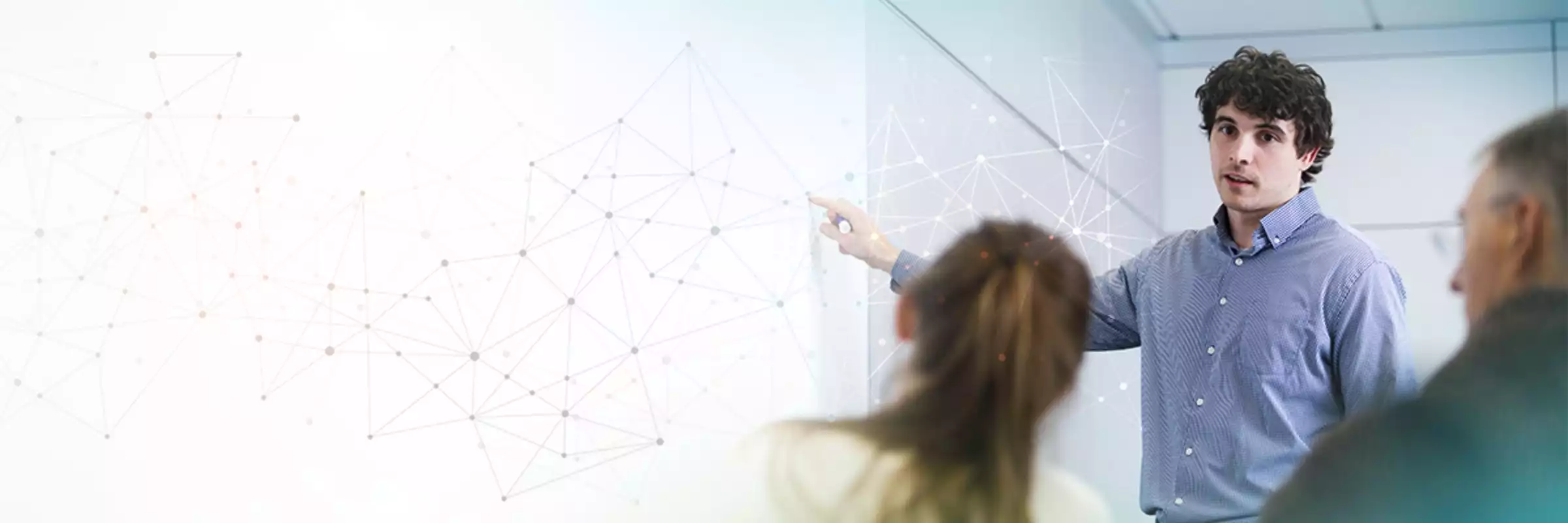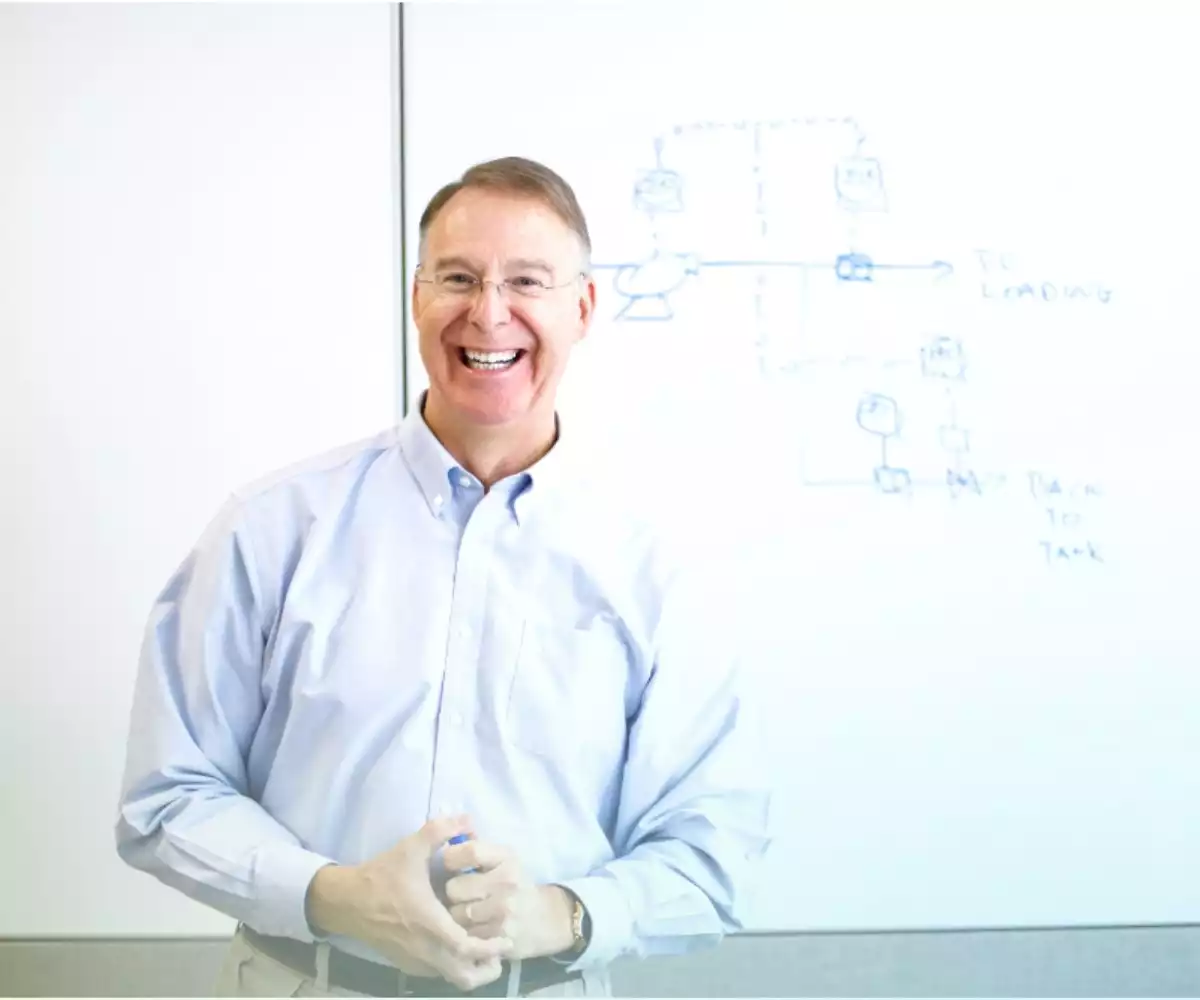January 6, 2022
People-First Automation: Koch Fertilizer's Plant of the Future
People are passionate about many things: politics, gardening, craft cocktails and puppies. For Howard Elton, joy comes in the form of process control automation.
People are passionate about many things: politics, gardening, craft cocktails and puppies. For Howard Elton, joy comes in the form of process control automation. “These are the systems that protect chemical plants and people around them,” he says. His unbridled passion is a good thing for Koch Ag & Energy Solutions. He’s the guy who’s preparing the plants of the future.

Some say the plants of tomorrow will be fully autonomous — “dark plants,” they’re sometimes called. For Howard, a process control and automation leader, there’s nothing dark about it. What matters to him is finding and using technologies that can help Koch Fertilizer, part of Koch Ag & Energy Solutions, reduce environmental impact and be a better employer at the same time. As Howard explains, there will still be the same pumps and tanks, with the same high pressure and heat. But with technology like process control automation, the people working at those plants can access better data and use it to improve operations. This will improve environmental performance, such as emission per unit produced, while allowing employees to learn new skills.
“Helping our employees transform and using fewer resources – those are fundamental to any plant of the future,” he says.
Why the plant of the future matters
When people think of automation, they picture robots and computers replacing people. But it’s actually about improving safety and reducing opportunities for human error, which are hugely important in chemical manufacturing, a field that is “complex and sophisticated,” Howard says, meaning it’s possible for humans to make small, understandable mistakes. “If we can have the computer do things the same way, over and over, that’s the benefit of automation.”

The plant of the future is also about empowering people. When the machines or computers don’t run smoothly, people get stressed as they try to manage the problem. Automation takes most of the manual part out, which allows people to build new skills and capabilities and use their experience in a more fulfilling way. This helps them move into other jobs that will be needed in the future, where they can also provide greater value to the business.
One way automation empowers people is by monitoring the plant machinery alarms. When these alarms sound, it usually doesn’t mean there’s a real problem. Rather, it’s a signal that something needs to be checked or adjusted because the machinery is not operating within its precise settings. These alarms are important in chemical manufacturing to ensure the system is running as intended, but a human isn’t needed for every single check. Automation manages these alarms while still enabling potential process disruptions to be quickly addressed so the operators are able to focus on higher value, more fulfilling work without unneeded interruption.
How technologies are used
Koch Fertilizer uses many types of automation, but there are three Howard is most excited about. The first is advanced process control. With this technology, a computer creates a model of the manufacturing process, which includes elements that affect the efficiency of the process. That model helps Koch employees understand how to make production faster and more efficient.

Another automation tool is state-based control. Every manufacturing process goes through various steps to power up, reach its steady operational state and power down. By automating these steps, operators are freed from manually performing each task — reducing opportunities to introduce errors, set off alarms or hinder efficiency. “Those two tools take the skills of the best operators and the best process engineers and programs them into the computers,” Howard says. The result is a safer chemical plant that runs more smoothly and uses resources more wisely.
Howard’s other favorite automation tool is data-related. The tool collects detailed data about the manufacturing processes and the condition of the equipment, and provides it to the experts at the Koch facility. The insights gleaned help those experts make more informed decisions and do their jobs better.
Where Koch is using automated technologies
Several companies in Koch Industries use automation the same way as Koch Fertilizer, including INVISTA and Georgia-Pacific. “Fundamentally, we’re all operating chemical-manufacturing facilities,” Howard says. Even though the companies produce different products, the basic manufacturing theories are the same. Ammonia fertilizer plants, for example, use process automation to measure chemical temperatures, pressures and flow rates — all of which have to be controlled. Operators, electrical engineers, reliability engineers and control engineers all can use process automation to get data more quickly and in greater depth, to fine-tune the best conditions for manufacturing.
Howard recalls the time he visited board operators at the urea ammonium nitrate plants in Dodge City, Kansas, and Fort Dodge, Iowa. Board operators are the people who control manufacturing equipment from a central location. Howard and his colleagues went to these plants to introduce automation software and find out what the board operators needed to do their jobs better. At first the operators were skeptical of the automation process control models, but once they saw how it helped them, “the operators were ecstatic,” he says.

The board operators came to look forward to these visits, which gave them a chance to talk with process control engineers to learn how to use the automation tools to set their controls so they wouldn’t need to make all the changes manually. Once they had fine-tuned the technology parameters, some went from managing alarms on their keyboards hundreds of times a day to dealing with only a handful of alarms per day. They like the automation, Howard says, because “it allows them to think at a higher level about the process.” The board operators are enjoying their roles more now, with increased opportunities to do more analysis and strategy moving forward.
A bottom-up approach to technology
Companies that understand the importance of good engineering practices and also apply technologies like process automation will move ahead of their peers, Howard says. But introducing automation into a plant should be done the right way. Too many companies start with the automation technology itself, forcing it to fit into the process. That makes it difficult to merge the needs with the process.
Howard finds it better to start with the need and then add the right technology — a bottom-up approach. It doesn’t have to be expensive or complicated or be completed at one time. “Many software technologies we deploy have a 70%-90% return on investment,” he says.
It’s also important for automation initiatives and vision to come from the leadership. “Leaders are architects of the culture. Their support for organizational change is needed,” he says. Some people get nervous when new technologies are introduced, and there can be pushback about organizational changes and fears about job losses. “Not everybody likes change,” Howard says, but as the board operators saw, change can make their jobs better. And automation doesn’t necessarily lead to job losses because people can learn new skills and change roles within the company.

Howard is grateful he can put his vision for process control automation into action. “Koch has given me the opportunity to take this role and apply it to several very important things that we weren’t even thinking about before. That’s fulfilling to me.”



